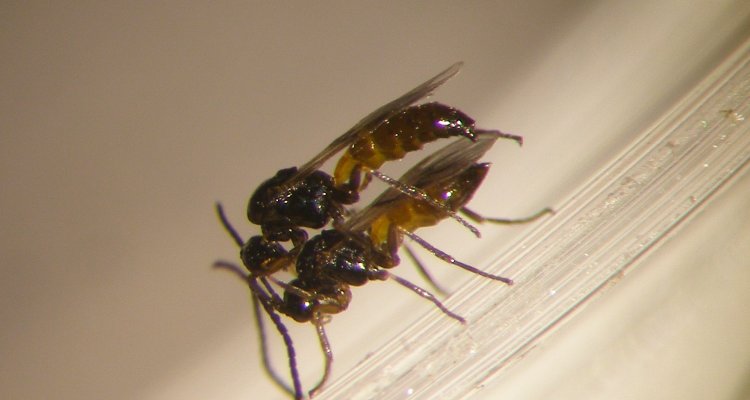
Project
The evolution of female mating systems
Understanding how populations are structured with respect to sexual interactions (the mating system) has been a key focus in evolutionary biology. Mating systems have consequences for both genetic and demographic change, and polyandry (multiple-mating by females) is a particularly important factor. In this fellowship, I will combine a broad-scale phylogenetic approach and single-system experimental evolution to test novel theory about the evolutionary causes and consequences of female mating behaviour.
Background
Understanding how populations are structured with respect to sexual interactions (the mating system) has been a key focus in evolutionary biology. Mating systems have consequences for both genetic and demographic change, and polyandry (multiple-mating by females) is a particularly important factor therein. Recent scientific insights have revealed that polyandry, and not monandry (single-mating by females) as traditionally assumed, is the dominant female mating system across all taxa.
Research on insects has contributed greatly to this paradigm-shift, with single-species studies revealing important factors that maintain female mating rates. Progress in understanding broader patterns has been relatively slow, however, as few studies have sought to elucidate evolutionary changes in female mating strategies in a phylogenetic framework.
In this fellowship, I will combine a broad-scale phylogenetic approach and single-system experimental evolution to test novel theory about the evolutionary causes and consequences of female mating behaviour. My models are parasitoid wasps, important natural enemies that have been well-studied from an applied perspective. This work has revealed great diversity in female mating rates, life-history strategies and genetic systems in this group of insects. These features allow me to expand upon existing theory to generate novel predictions about when polyandry, monandry, or even asexuality are likely to evolve. The work that I propose will advance current mating systems research, by going beyond asking what maintains the female mating rate, to discover what drives its initial evolution.
Project description
The overarching aim of this project is to: Understand when, why and how evolutionary changes in female mating rates arise. To achieve this aim, this project will explore patterns of change in the female mating rate over time using 2 complementary perspectives: (1) History of evolutionary transitions in female mating systems, (2) Present drivers of female mating system change using the parasitoid wasps as a model system.
History
Construct a phylogenetic model to look at finer scale macroevolutionary changes in female mating behaviour in the parasitoid wasps.The diversity in and knowledge of female mating patterns across the parasitoids will allow us to use phylogenetic comparative methods to estimate when female mating behaviour changed in the past, and whether these changes drive the evolution of other traits.
Present
Track changes in female mating behaviour in real-time using experimental evolution in the parasitoid Lysiphlebus fabarum. We will set up populations with different sex ratios to limit or increase the availability of males, we will then measure female mating rates over generations to test how factors such as mate-limitation drive changes in the frequency of polyandry and monandry.
Results
History: so far we have constructed a database of parasitoid mating systems and life histories. Monandry (single mating) is by more common in this group compared to other insects. Previous estimates in the 1990’s estimated around 70% of species were monandrous, integrating data collected in the last 30 years suggests this may be an slight overestimate, we have found so far that 63% (87/137) species are monandrous. We are now looking for phylogenetic patterns in the data to understand whether monandry or polyandry is ancestral and what conditions predispose species to evolutionary changes in the female mating rate.